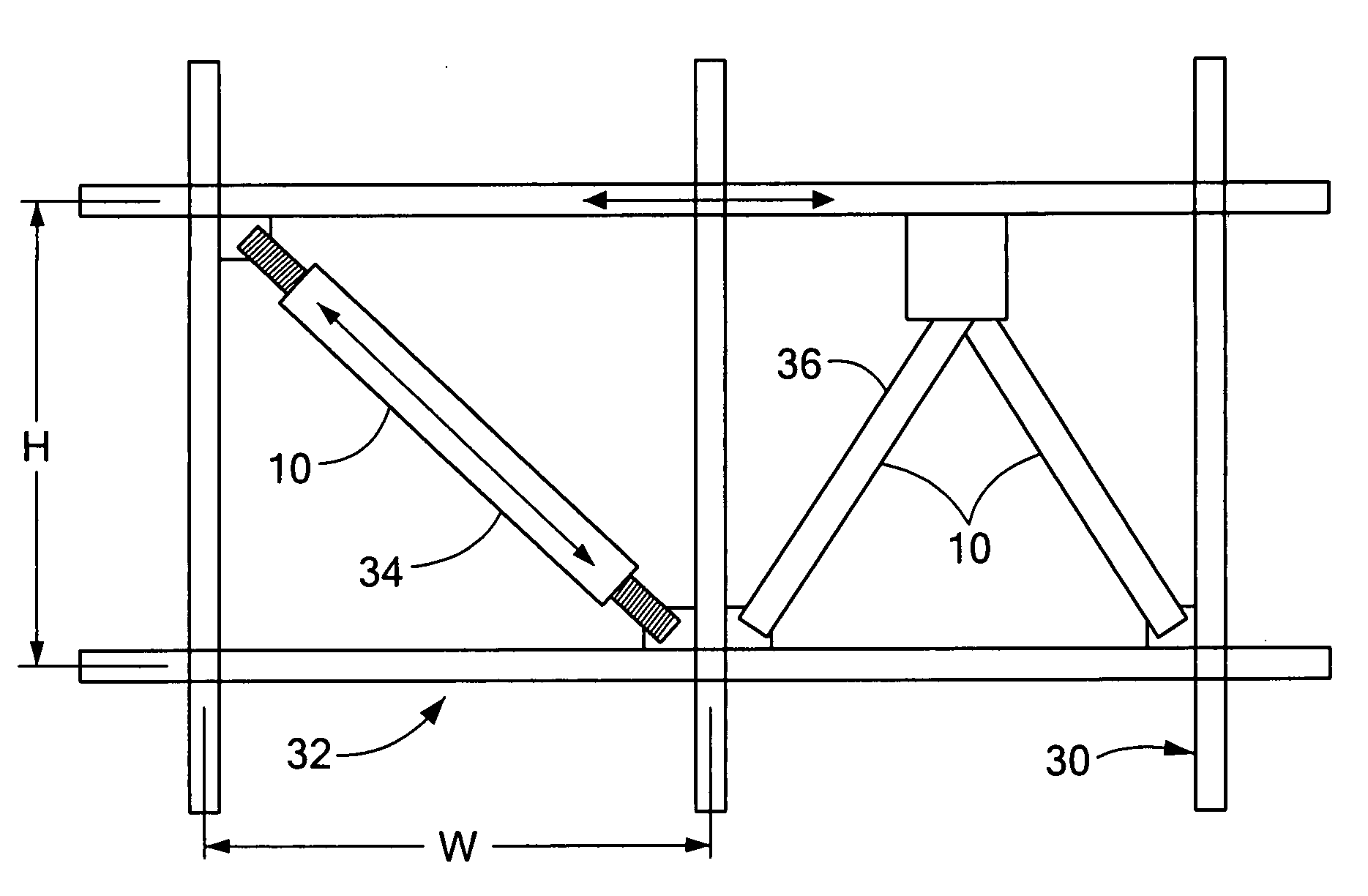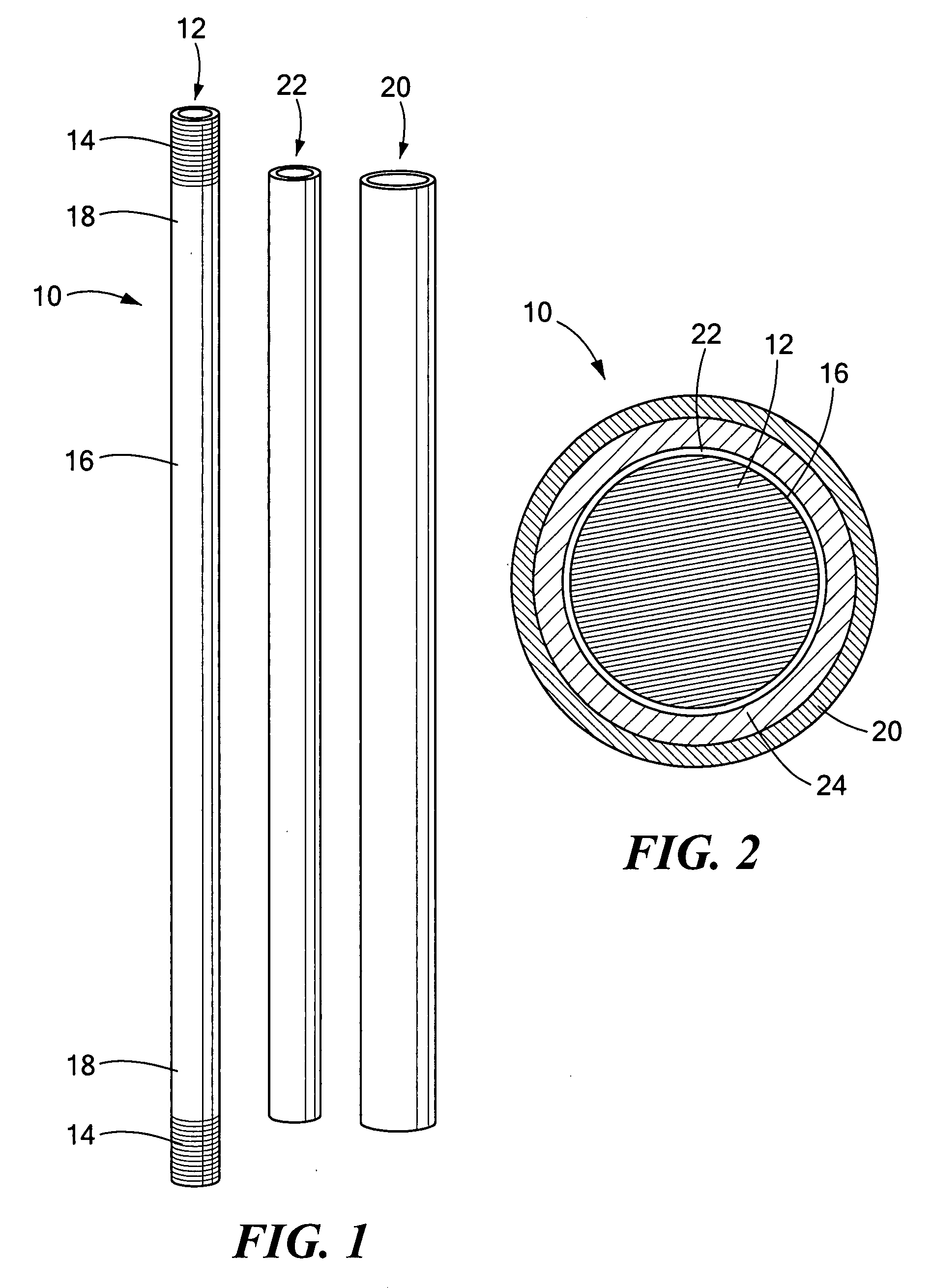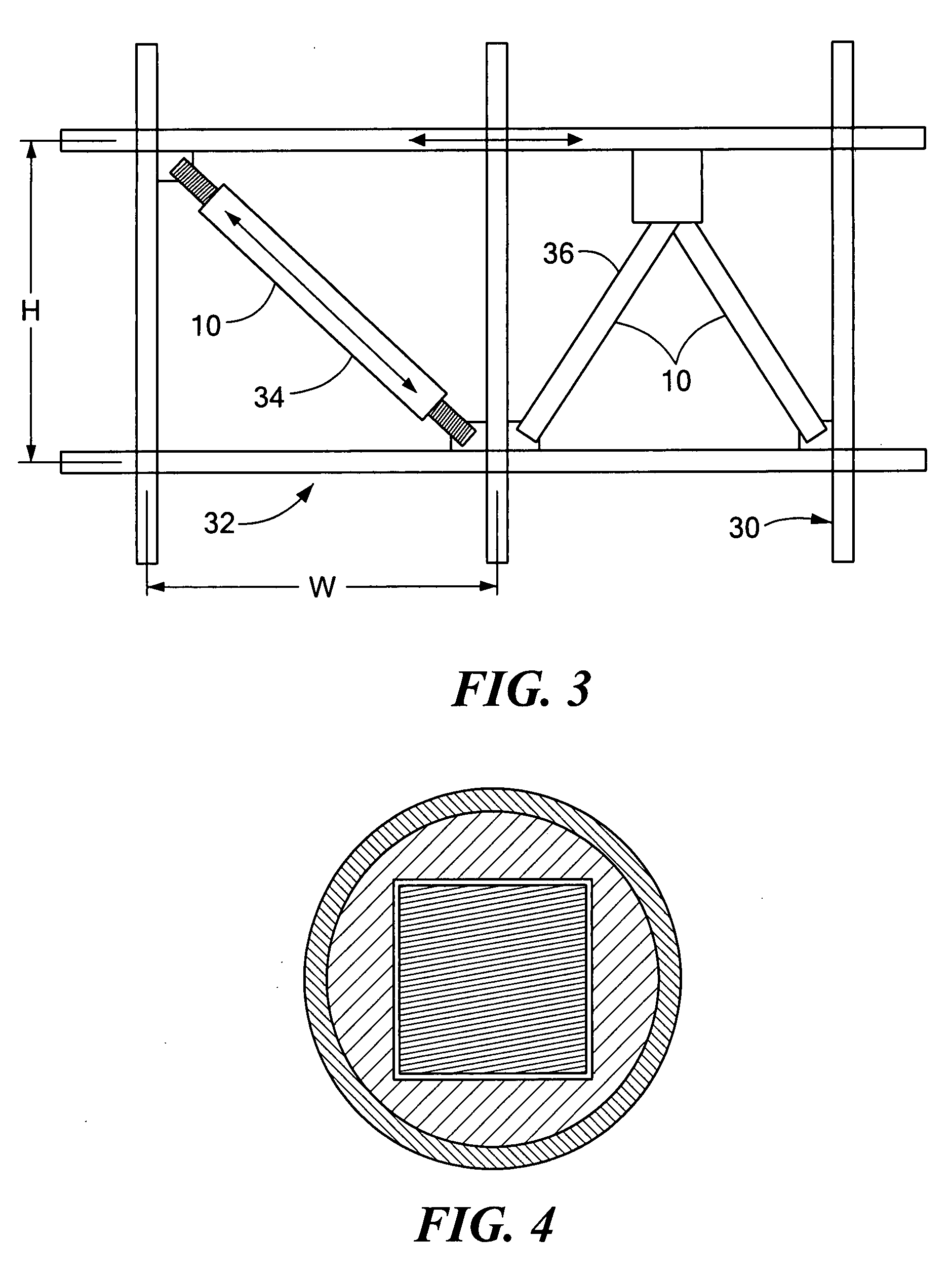Buckling restrained brace for structural reinforcement and seismic energy dissipation and method of producing same
a technology of structural reinforcement and restraint, which is applied in the direction of shock-proofing, other domestic objects, building components, etc., can solve the problems of building framing, facade and window damage, ceiling damage, etc., and achieves tailoring yield strength, high strain capacity, and a strong earthquake reducing
- Summary
- Abstract
- Description
- Claims
- Application Information
AI Technical Summary
Benefits of technology
Problems solved by technology
Method used
Image
Examples
example 1
[0039]A high capacity 2024 aluminum core, steel casing brace has been produced by differential heat treatment according to the invention. Using a core of 2024-T3 aluminum, the mid section was heated at 550 to 700° F. for 7 to 8 hours. The brace was tested in fully reversed tension-compression cycling. The testing sequence consisted of multiple cycles starting at low imposed displacements and increasing progressively to extremely high deformation (up to ±3.5% equivalent inter-story drift). See FIG. 10. This test demonstrates the capability of the present BRB to withstand deformations which would be imposed by a high magnitude earthquake. FIG. 10 shows that the BRB of the present invention subsequently survived multiple additional cycles at ±2.5% equivalent inter-story drift before ultimate failure.
example 2
[0040]A high capacity 6061 aluminum core, steel casing brace has been produced by differential heat treatment as in Example 1. The brace was tested in fully reversed tension-compression cycling to extremely high strains (up to ±3.5% equivalent inter-story drift) plus multiple additional cycles at ±2.5% equivalent inter-story drift before ultimate failure. See FIG. 11.
example 3
[0041]In another example, a 6061 aluminum core brace was produced, in which the ends of the core were heated at ˜370° F. for approximately 7 hours. The gauge section was held at a cooler temperature. The brace was tested in fully reversed tension-compression cycling.
[0042]FIG. 12 illustrates a comparison between demonstrated capabilities of different earthquake brace designs in fully reversed tension-compression loading. Maximum brace performance is plotted as percent deformation normalized by each respective brace's total installed length, i.e. including length of deforming core (gauge length) plus all transition sections, end fittings, and attachments to a building's steel frame. FIG. 12 shows that braces of the present invention have demonstrated strain capabilities (as shown in FIGS. 10 and 11) on the order of 50% to 100% greater than prior art, the latter being representative of braces in commercial use having a steel deforming core with cruciform cross-section and a concrete-f...
PUM
| Property | Measurement | Unit |
|---|---|---|
| thick | aaaaa | aaaaa |
| yield strength | aaaaa | aaaaa |
| elongation capability | aaaaa | aaaaa |
Abstract
Description
Claims
Application Information
 Login to View More
Login to View More - R&D
- Intellectual Property
- Life Sciences
- Materials
- Tech Scout
- Unparalleled Data Quality
- Higher Quality Content
- 60% Fewer Hallucinations
Browse by: Latest US Patents, China's latest patents, Technical Efficacy Thesaurus, Application Domain, Technology Topic, Popular Technical Reports.
© 2025 PatSnap. All rights reserved.Legal|Privacy policy|Modern Slavery Act Transparency Statement|Sitemap|About US| Contact US: help@patsnap.com



